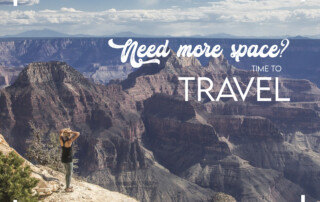by coste
Share

According to a recent survey by Deloitte, 82% of travelers consider brand reputation to be a crucial factor when making travel decisions, highlighting the immense influence branding holds in shaping consumer perceptions. With countless options available to consumers, effective branding is a must, guiding travelers to the experiences and destinations that resonate with their desires and aspirations. In an industry where differentiation is key, your brand becomes your most valuable asset, setting you apart from competitors and fostering customer loyalty.
Defining Effective Branding
Effective branding goes beyond simply having a recognizable logo or catchy slogan; it encompasses every aspect of your business’s identity and values. It’s about creating a cohesive narrative that speaks to the hearts and minds of your target audience, forging a deep emotional connection that transcends transactional relationships. Take Airbnb, for example. Through its innovative branding approach, Airbnb has transformed the way travelers experience accommodation, positioning itself as more than just a booking platform but as a curator of unique, personalized experiences. By infusing its brand with values of community, inclusivity, and adventure, Airbnb has cultivated a fiercely loyal following, with 91% of users reporting satisfaction with their overall Airbnb experience (source: Airbnb).
The Impact of Design on Branding
Design plays a pivotal role in shaping brand perception and driving engagement. Your logo, color palette, typography, and imagery serve as the visual cues that communicate your brand’s personality and values to the world. According to a study by Nielsen Norman Group, users form an opinion about a website within 0.05 seconds of landing on it, underscoring the importance of making a strong visual impression. One brand that understands the power of design in branding is National Geographic. With its iconic yellow border and stunning photography, National Geographic has become synonymous with exploration, education, and conservation. By consistently delivering visually compelling content across its platforms, National Geographic has cultivated a loyal audience of millions, demonstrating the transformative impact of design on brand storytelling (source: National Geographic).
Attracting Customers Through Design
Effective design not only captures attention but also conveys the essence of your brand and the value of your offerings. In the travel industry, where experiences are the currency, compelling visuals can transport potential customers to their dream destinations and ignite their sense of wanderlust. Consider the Instagram account of The Points Guy, a leading travel resource specializing in credit card rewards and travel tips. With its vibrant imagery of exotic locales and insider advice, The Points Guy’s Instagram feed serves as a visual showcase of the possibilities that await savvy travelers. By curating visually stunning content that resonates with its audience’s aspirations, The Points Guy has amassed over 3 million followers, demonstrating the magnetic allure of captivating design in attracting customers (source: The Points Guy Instagram).
Building Brand Loyalty
Consistency is key when it comes to building brand loyalty. By maintaining a cohesive visual identity across all touchpoints, from your website and social media channels to your marketing materials and customer interactions, you reinforce your brand’s credibility and trustworthiness. Southwest Airlines is a prime example of a brand that excels in consistency. With its distinctive blue and red color scheme, playful typography, and friendly tone, Southwest Airlines has cultivated a loyal following of customers who appreciate its commitment to affordability, convenience, and customer service. According to a recent survey by J.D. Power, Southwest Airlines ranks highest in customer satisfaction among low-cost carriers for the 12th consecutive year, underscoring the enduring loyalty it has built through its consistent branding efforts (source: Southwest Airlines).
Adapting to Changing Consumer Expectations
Travel brands must continuously evolve their design strategies to meet changing consumer expectations and market dynamics. This means embracing new technologies, platforms, and design trends to create memorable brand experiences that resonate with today’s travelers. Take Expedia, for instance. As one of the world’s leading online travel agencies, Expedia has embraced immersive technologies such as virtual reality (VR) and augmented reality (AR) to enhance the booking experience for its customers. Through its Expedia Virtual Agent, users can explore hotel rooms and destinations in stunning 360-degree detail, providing a more engaging and interactive way to plan their travels. By embracing innovative design technologies, Expedia has positioned itself at the forefront of the travel industry, catering to the evolving needs and preferences of modern travelers (source: Expedia).
In conclusion, effective branding is the cornerstone of success in the competitive travel industry. By leveraging the power of design to communicate your brand’s identity, values, and unique selling propositions, you can differentiate yourself in a crowded market, attract more customers, and build lasting brand loyalty. As travelers increasingly turn to brands that resonate with their aspirations and values, investing in thoughtful design and branding strategies is more important than ever for entrepreneurs and small-medium businesses in the tourism and travel industry. By prioritizing authenticity, consistency, and innovation in your branding efforts, you can create unforgettable brand experiences that inspire and delight travelers around the world. So, dare to dream big, and let your brand’s story take flight!
Related Posts
SEO Strategies for Travel and Tourism Businesses
As the world becomes more connected, travel and tourism businesses
Why Tour Operators should embrace personalized trips to grow their business
In today's highly competitive tourism industry, tour operators are always
Trending Destinations for Travelers in 2023
As the world opens up post-pandemic, travelers are eager to
The Rise of Digital Nomads: How Remote Work is Transforming the Travel Industry
The COVID-19 pandemic has brought about significant changes to the
Sustainable Tourism: How Travel Can Help Local Economies and the Environment?
Travel and tourism have become a major part of our






